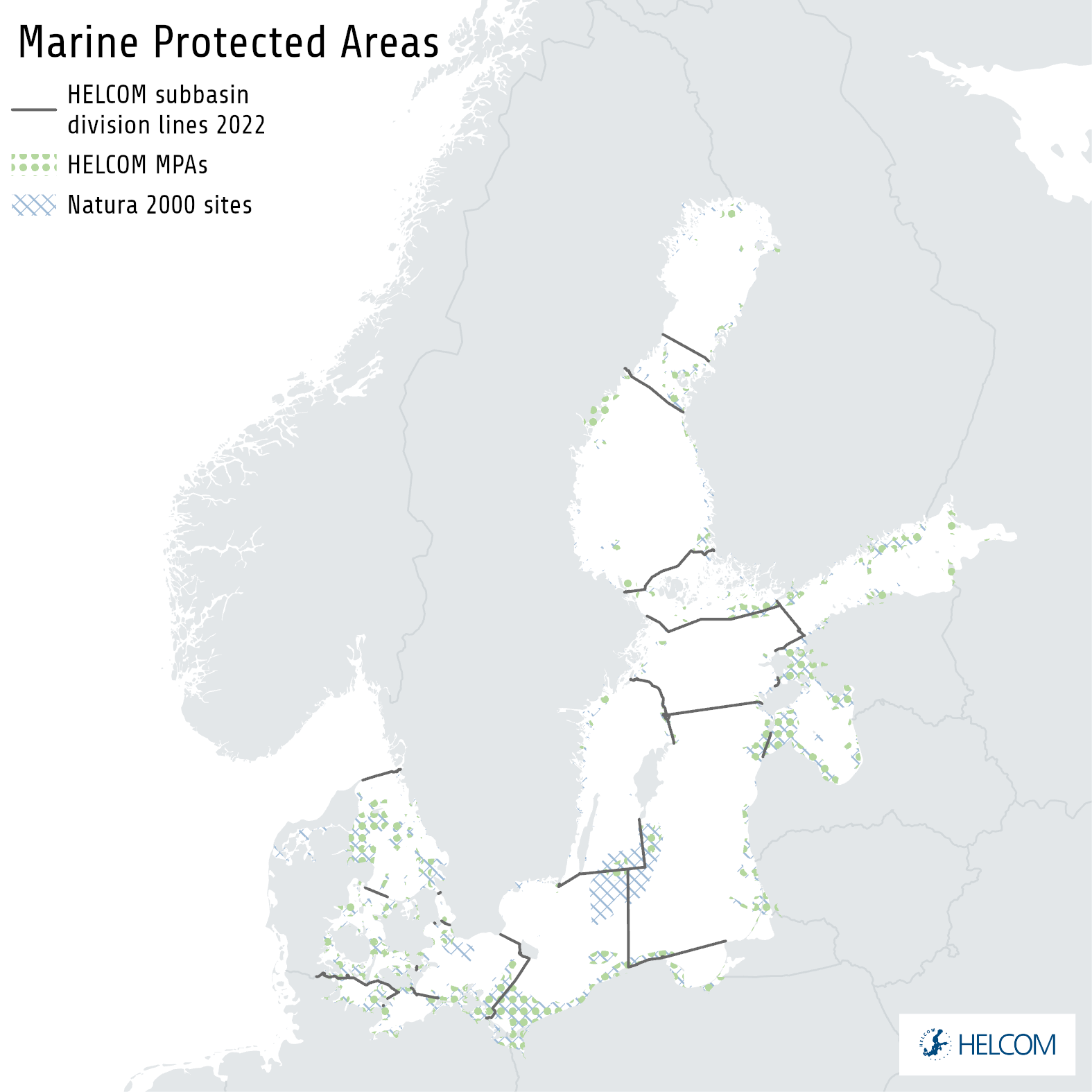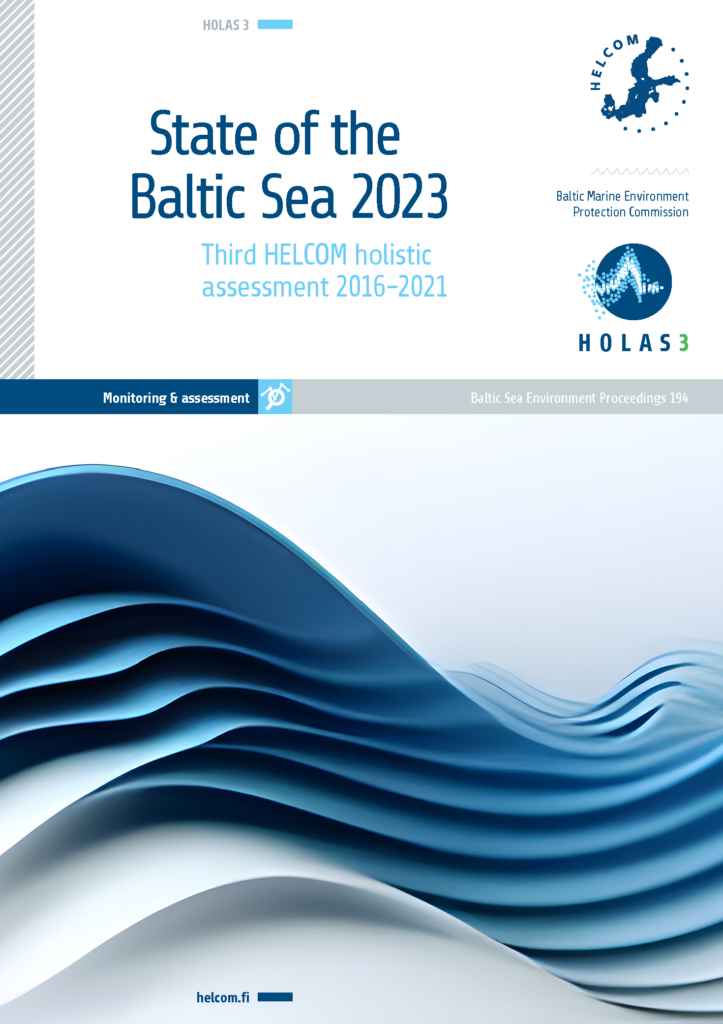PROTECTION AND RESTORATION
Spatial protection and restoration as tools in conservation
While reducing or preventing harmful inputs and minimizing pressures from human activities at sea are of key importance to ensure the broad recovery of species and habitats in the Baltic Sea, spatial protection supports biodiversity by ensuring sustain- able limits to human exploitation or activities in defined areas.
Marine protected areas are the most common form of spatial protection in the Baltic Sea. Other measures that contribute to effective area-based conservation can also be included in the concept of spatial protection.
However, in cases where the natural ecosystem has been de- graded, damaged or destroyed, restoration measures may be needed to assist recovery, and these are increasingly being used in HELCOM countries.


Figure 4.31. Current HELCOM marine protected areas 2016-2021.
Marine protected areas
Marine protected areas are spatially defined areas that are selected for protection because they can be particularly useful to safe- guard marine ecosystems, processes, functions, habitats and species, and that are managed to support this purpose. By providing protection from adverse human activities, marine protected areas can support both ecological values and the social, economic, and cultural values depending on these (e.g. Reuchlin-Hugenholtz & McKenzie 2015). The main purpose of the HELCOM marine protected areas (HELCOM MPAs) is to protect valuable marine and coastal habitats in the Baltic Sea. This is achieved by designating suitable areas which have particular natural values as protected areas and by effectively managing human activities within those areas (HELCOM 2021, HELCOM ACTION 2021b). These sites should form an ecologically coherent network – that is, a network of protected sites which together deliver more benefits than individual protected areas.
Other effective area-based conservation measures
While the network of marine protected areas is the backbone and primary focus of area-based protection efforts in HELCOM, other effective area-based conservation measures (OECM) can comple- ment this network to support biodiversity. For example, other effective area-based conservation measures can be designed to improve the status of key biodiversity attributes or to support key ecosystem aspects in cases where the designation of fully protect- ed areas is not an option. The identification and recognition of other effective area-based conservation measures can also provide an opportunity to engage with and support a range of new partners and sectors in conservation efforts.
Restoration
Different types of restoration exist with differing aims and levels of interference. Passive restoration refers to removing or significantly reducing the source of a disturbance (the pressure), allowing the disturbed habitat to recover naturally through ecological succession. In other cases, the disturbed site may have become so degraded that it is not able to recover on its own within a reasonable time frame. In these cases, the removal of the pressure is only the first step, and recovery must be actively assisted through restoration measures. Active restoration may involve, for example, the removal of artificial objects from the marine environment, the reconstruction of habitats or the reintroduction of species. Active restoration is considered an effective supplement to conservation and management actions when the natural recovery of ecosystems is precluded, but it is often possible only at a comparatively small scale and can be resource intensive (HELCOM ACTION 2021c).

State of the Baltic Sea 2023 — The third HELCOM holistic assessment (HOLAS 3)
State of the Baltic Sea 2023 is a synthesis report that builds on, and integrates, results from a wide range of assessment products produced within the third HELCOM holistic assessment. Its role is to link information from the underpinning assessment products together, thus highlighting the holistic aspects. With this in mind, the summary report focuses on presenting the results and on an in-depth look at why we are seeing these results, providing over-arching context and analysis. The report helps develop a clearer picture of where we are and how things are connected, supporting coordinated and effective measures to strengthen the Baltic Sea environment.
